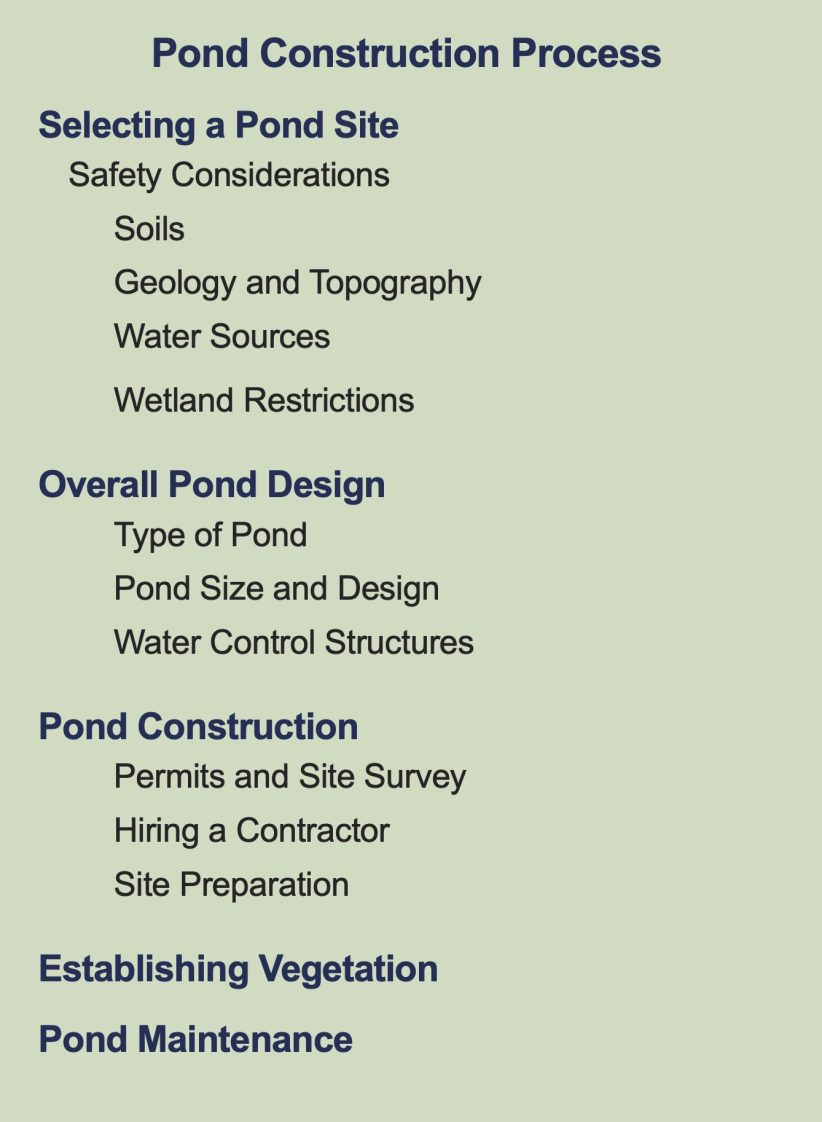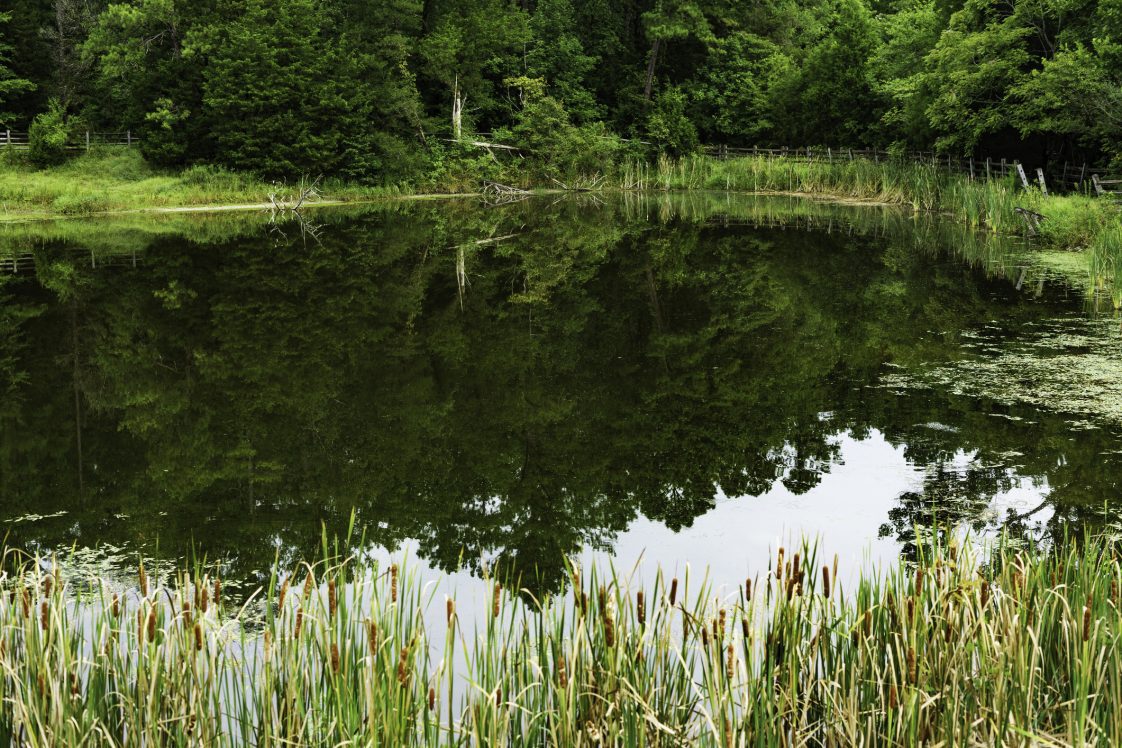Fish & Water

A properly located, well-constructed pond can be a beautiful addition to a landscape. Ponds provide owners with excellent recreational activities, such as fishing, swimming, and wildlife viewing, as well as potential water sources for livestock watering, irrigation, geothermal home heating/cooling, and firefighting.

Figure 1. The pond construction process
This document is designed to provide prospective pond owners with basic information needed to understand the process involved in establishing and maintaining a quality pond (figure 1). The information is intended to enable landowners to avoid costly mistakes, to communicate more effectively with pond contractors, and to be successful at building and maintaining the best possible pond.
Pond Construction Process
- Selecting a Pond Site
- Safety Considerations
- Soils
- Geology and Topography
- Water Sources
- Wetland Restrictions
- Safety Considerations
- Overall Pond Design
- Type of Pond
- Pond Size and Design
- Water Control Structures
- Pond Construction
- Permits and Site Survey
- Hiring a Contractor
- Site Preparation
- Establishing Vegetation
- Pond Maintenance
 Revised by Russell Wright, Extension Fisheries Specialist, School of Fisheries, Aquaculture, and Aquatic Sciences, Auburn University. Written by Chris Hyde, Extension Aquaculturist, Department of Fisheries and Allied Aquacultures, Auburn University, and Perry Oakes, State Conservation Engineer, USDA Natural Resources Conservation Service, Alabama. Adapted from “Ponds–Planning, Design, Construction,” USDA NRCS. 2000. Agricultural Handbook Number 590.Washington, D.C.
Revised by Russell Wright, Extension Fisheries Specialist, School of Fisheries, Aquaculture, and Aquatic Sciences, Auburn University. Written by Chris Hyde, Extension Aquaculturist, Department of Fisheries and Allied Aquacultures, Auburn University, and Perry Oakes, State Conservation Engineer, USDA Natural Resources Conservation Service, Alabama. Adapted from “Ponds–Planning, Design, Construction,” USDA NRCS. 2000. Agricultural Handbook Number 590.Washington, D.C.
Revised August 2023, Pond Building: A Guide to Planning, Constructing & Maintaining Recreational Ponds, ANR-1114

